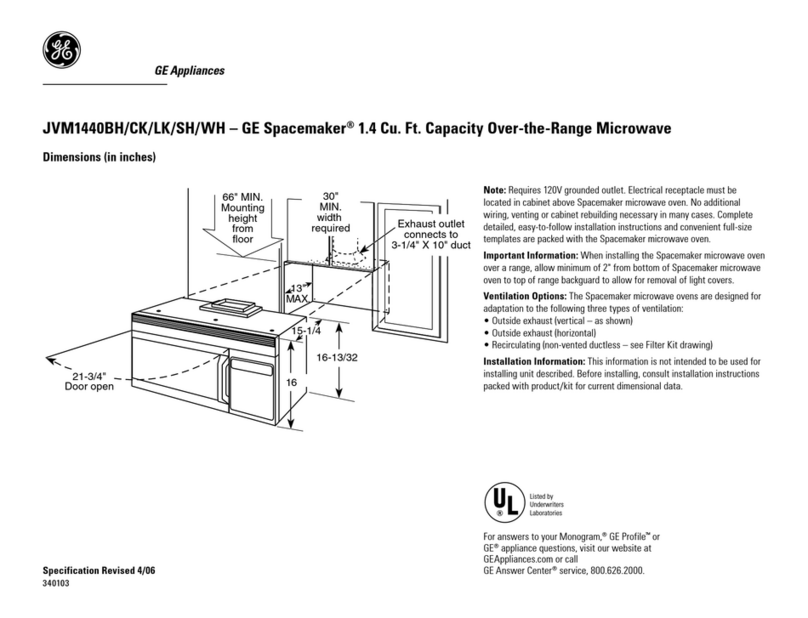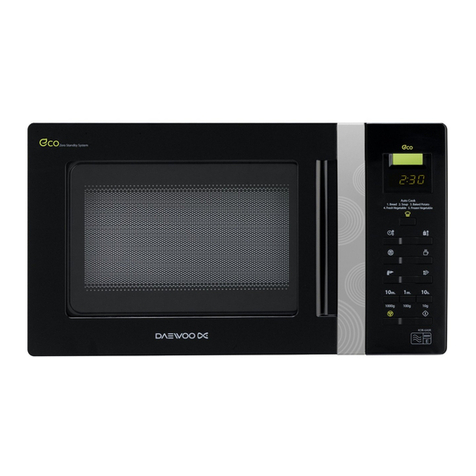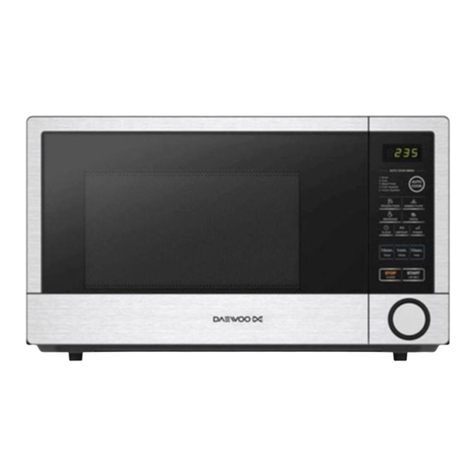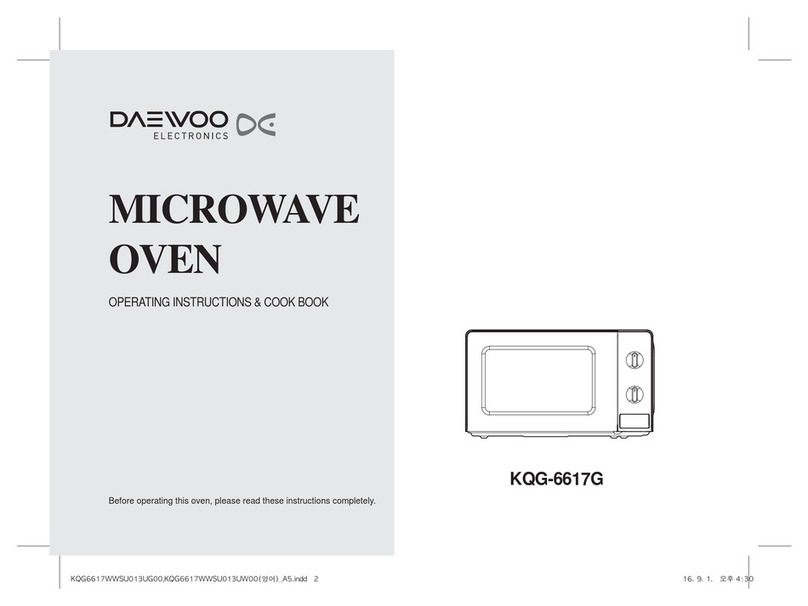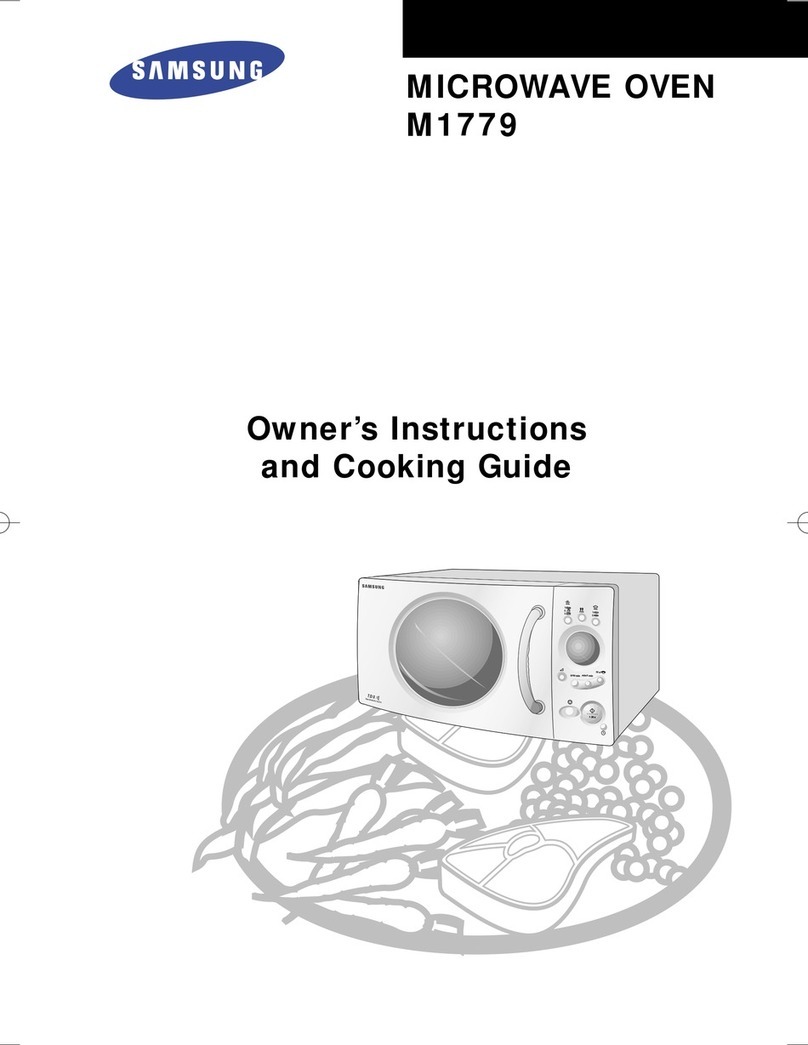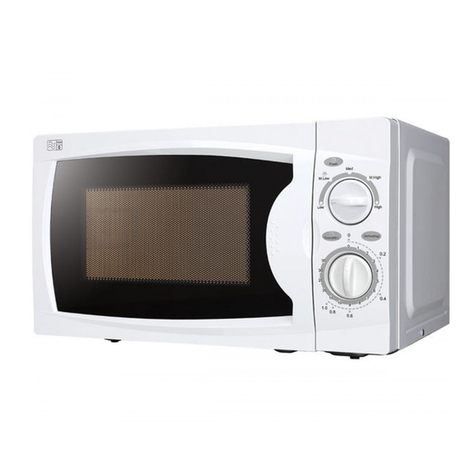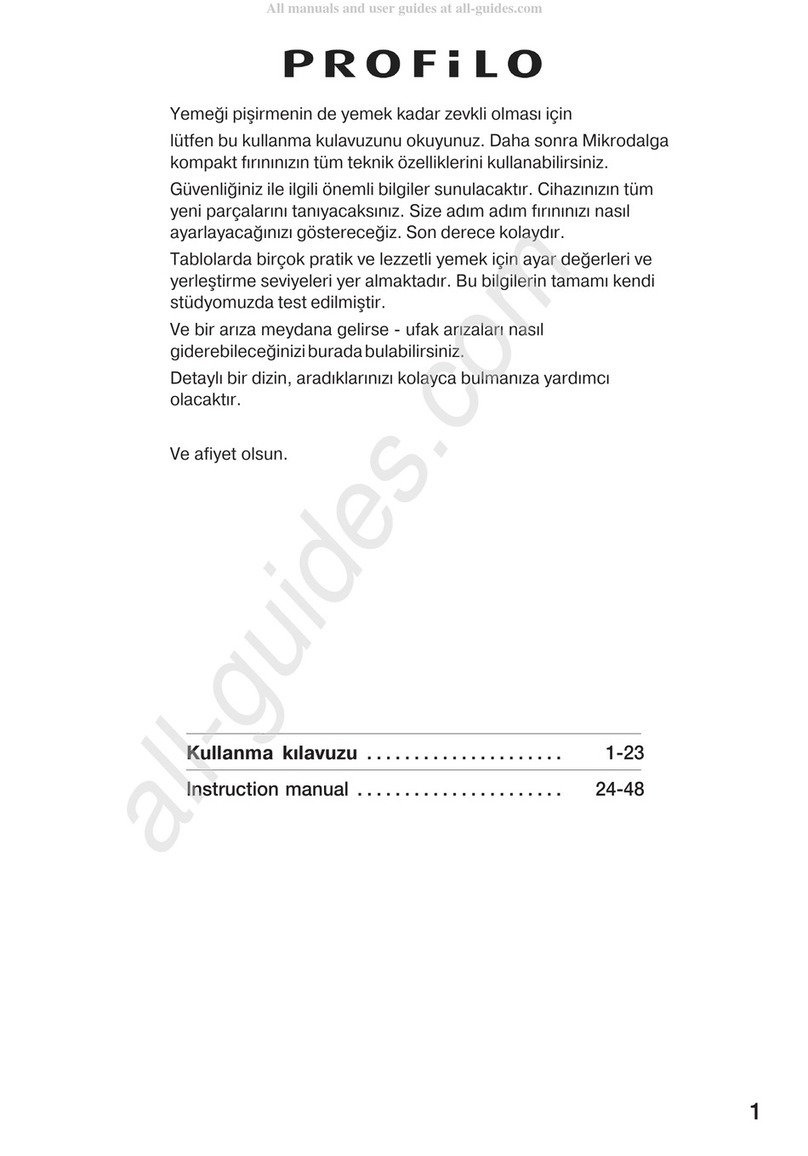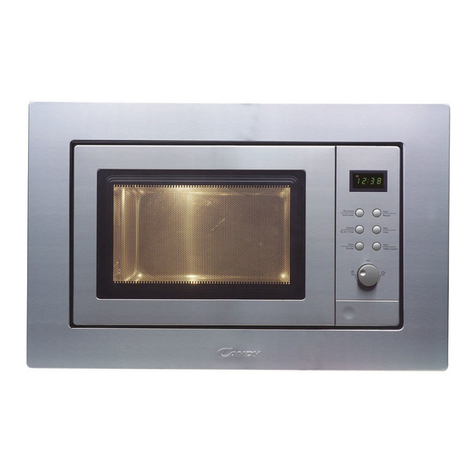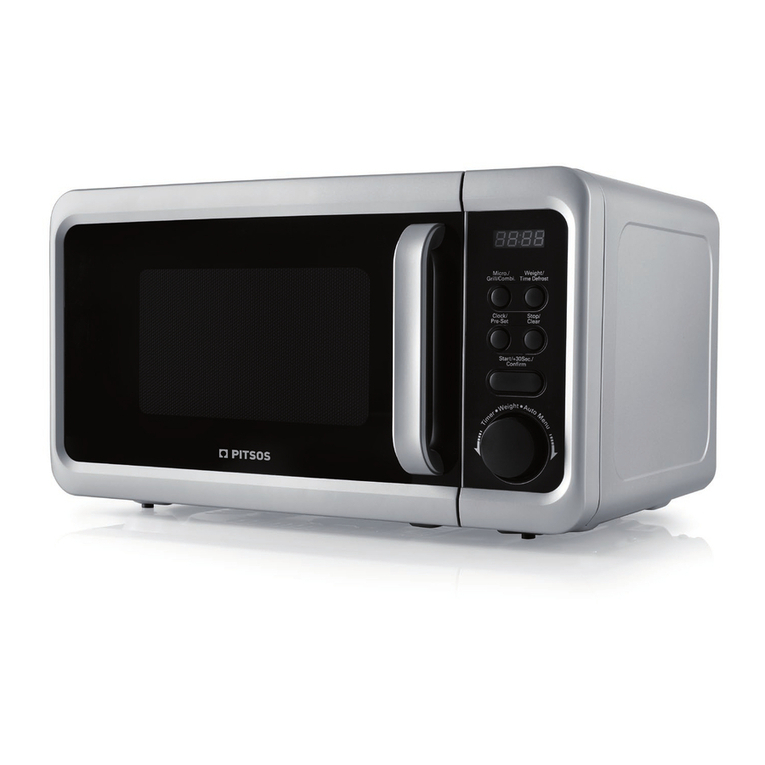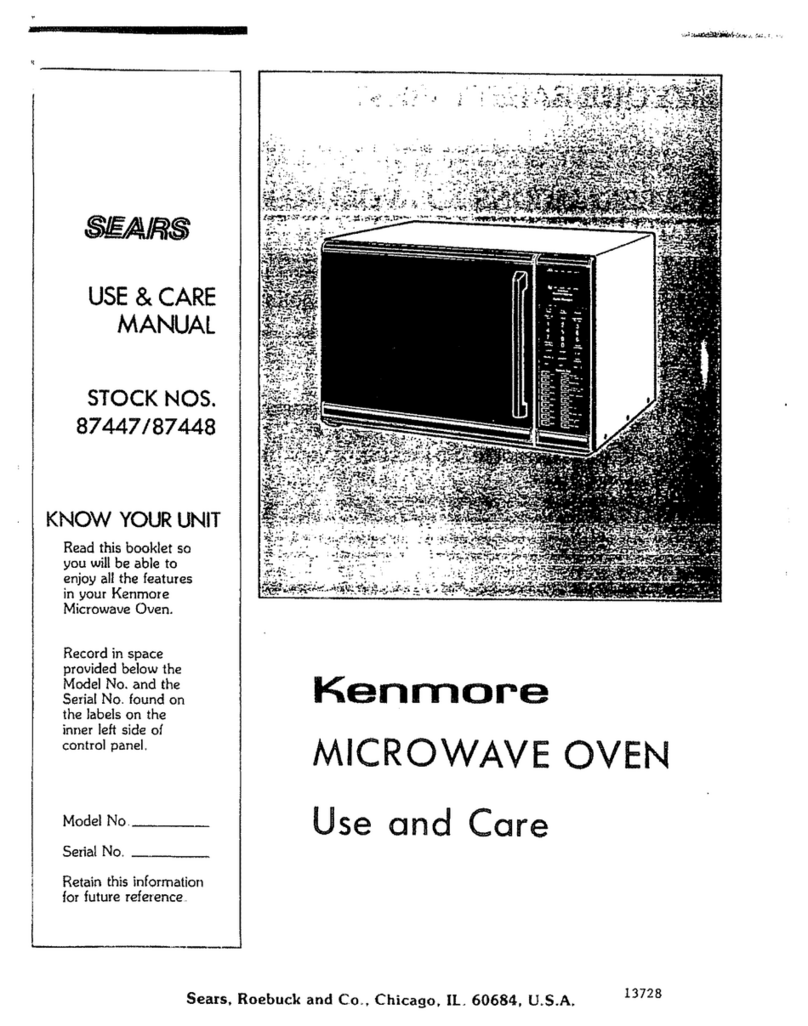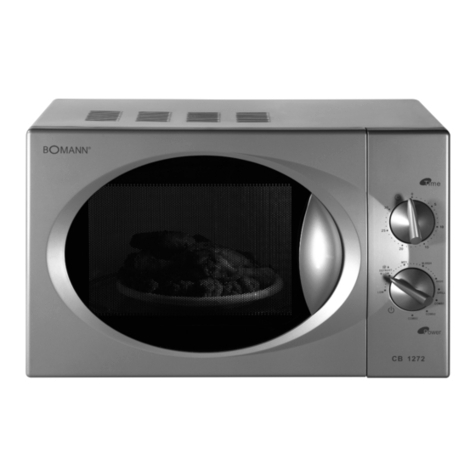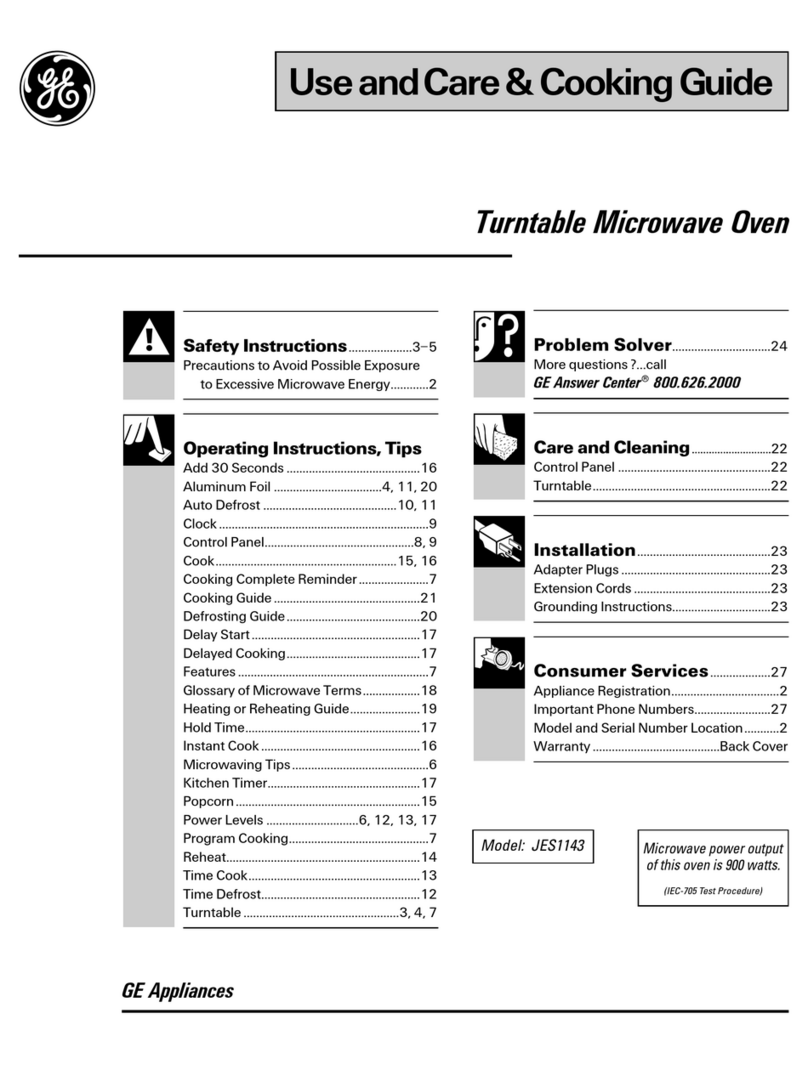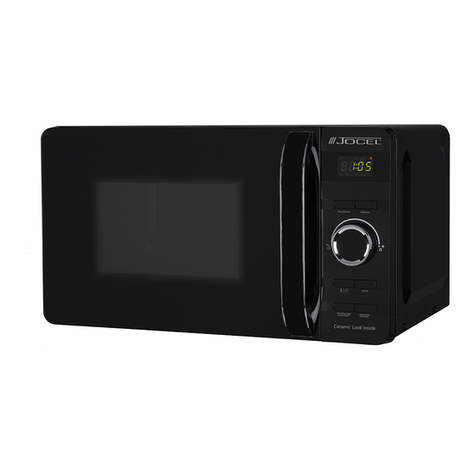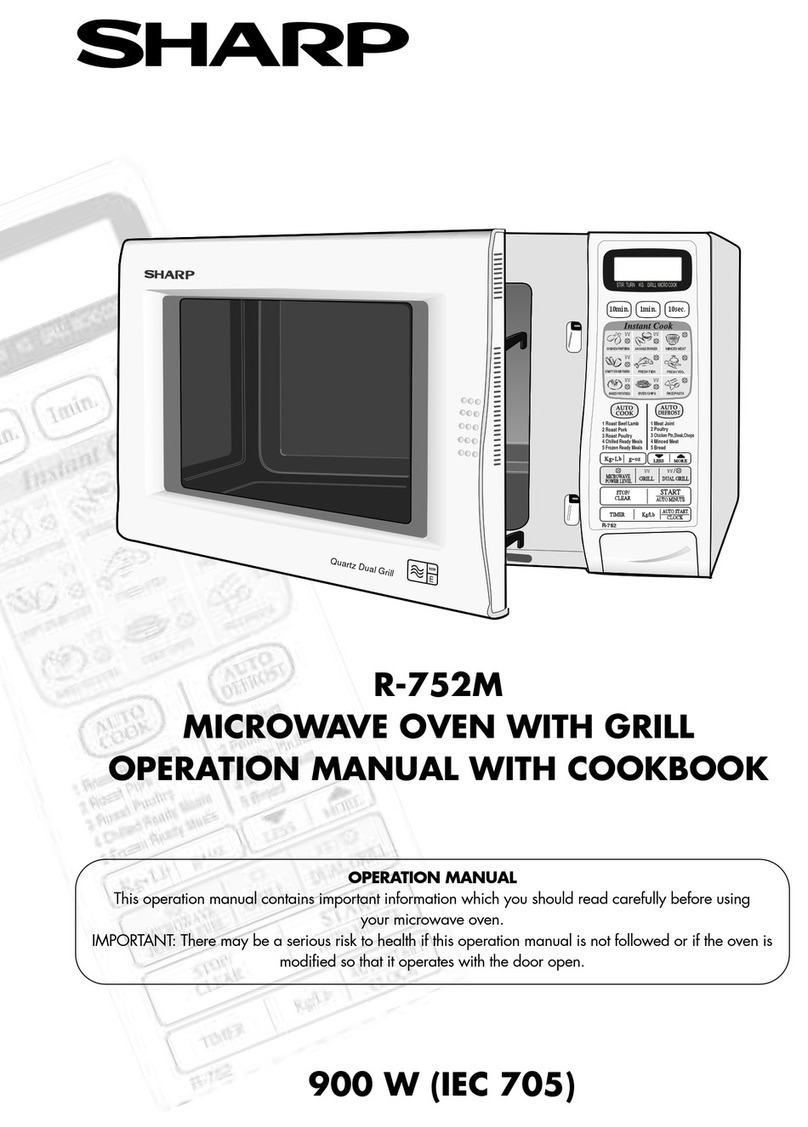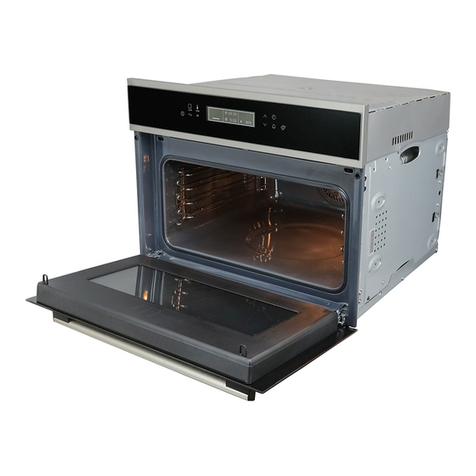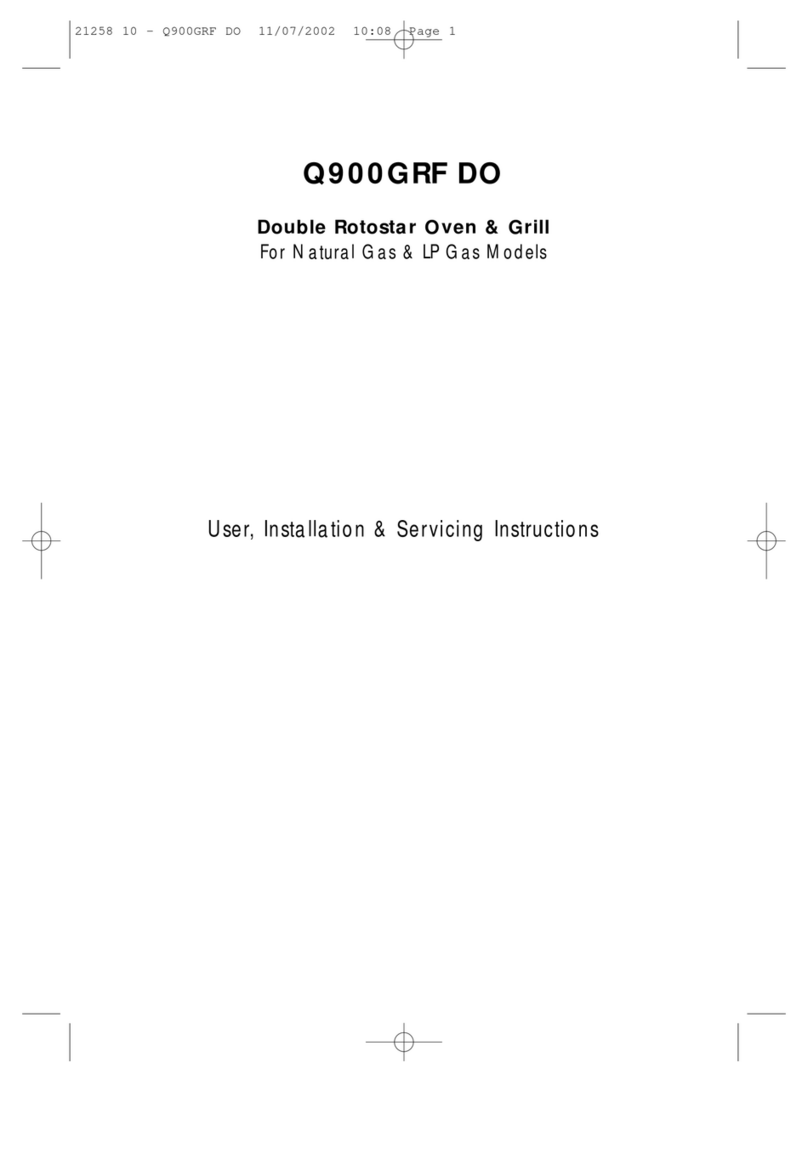Checking your cooking utensils
Most heat-resistant, non-metallic cooking utensils are
safe
to
use
in your microwave. Ifyou
are
not
sure you
can
use
a utensil in your microwave, follow this simple test:
1.
Put
the
utensil into
the
microwave next
to
a cup
of
water -
use
acup
that
you know
is
microwave
safe.
Close the door.
2.
Turn the microwave on for 30 seconds only.
3.
After 30 seconds, carefully check
to
see
if
the water
has
warmed up.
If
the water
has
not
warmed up
but
the utensil
has,
the utensil
is
not
microwave
safe
and should
not
be used in the microwave.
4.
Do
not
use
your hands
to
touch
the
utensil
as
it
may already be hot.
~===========================================-.
Never
use
equipment made
of
metal, except aluminium foil in your microwave.
The microwave energy
can
not
pass
through
the
metal
so
it
bounces
off
and sparks against the
..-..
inside
of
the microwave.
Stop the microwave straight away
if
any equipment does cause sparks.
Remember
that
some crockery
has
a metal
trim
around
the
edge.
Even
this
trim
can
cause sparks.
Never
use
scratched, cracked or damaged glass in a microwave. Damaged glass
can
explode.
Using Aluminium Foil in Your Microwave
It
is
safe
to
use
aluminium foil in your microwave
as
long
as
you follow these safety guidelines.
As
with all metals, microwave energy cannot
pass
through aluminium foil,
but
provided you keep the
aluminium foil away from the side
of
the microwave
it
will
not
cause sparks and there will
not
be any
damage
to
your microwave.
Using aluminium foil
is
a good way
of
shielding parts
of
food
that
you
do
not
want
to
cook
as
quickly
as
others -perhaps where the food
is
narrower and would otherwise overcook,
Place
the aluminium foil over the
area
you want
to
shield, taking care
that
the aluminium foil will
not
touch
the sides
of
the microwave when the turntable plate rotates. Only
use
one piece
of
aluminium foil at atime
so
that
you
do
not
get
sparks between the separate pieces.
Follow these guidelines when using aluminium foil in your microwave:
Remove aluminium foil lids from containers before using
in
the microwave. Some lids are made
of
card
with
aaluminium foil covering -these should be removed too.
Use
a microwave
safe
transparent lid
if
possible.
Stir food during cooking
if
the container
has
a lid
or
film cover.
Always
use
the glass turntable plate.
Use
shallow containers
with
a large surface
area.
Do
not
use
containers
that
are more than 1.2Sin
(3.Scm)
deep.
Use
gloves when handling
hot
aluminium foil containers.
Do
not
completely cover food
with
aluminium foil. The microwave energy cannot
pass
through
the
aluminium foil
so
the food will
not
cook.
Do
not
let aluminium foil touch the inside
of
the microwave.
Do
not
use
more than one piece
of
aluminium foil in the microwave at the same time.
7

